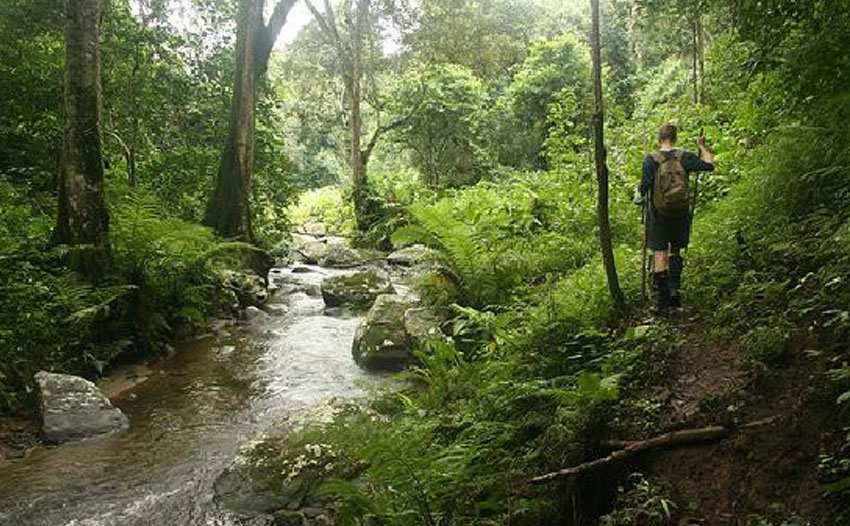Taking a hike in the woods can be a relaxing way to refresh your mind. Stepping away from the hustle and bustle can be a great means of rejuvenation. However you shouldn't take hiking lightly, as one can easily get lost or become a target of a predator. Make sure you bring a map and a compass, and it’s also a good idea to bring along a potent pepper spray sufficient to repel bears. ALWAYS bring spare food and water in case you’re out longer than you anticipated. It's important to eat plenty of food and water the day before and day of your hike.
Always tell a friend or family member exactly where you plan to hike, how long you plan to be out, and make plans to call later to verify your safe return. If you’re not back when planned, they should notify the police department as to where you were going, and when you were expected back. The police can then contact an emergency rescue team to look for you. It's especially important to bring a compass, map, survival gear, first aid kit, cellphone and even possibly a SPOT messenger, even if only planning a day trip. A SPOT messenger uses satellite communication to contact emergency agencies such as the police department in the event you become lost. It can also allow for communication between you and your family, so you can let them know that you are still okay.
If you find yourself lost in the woods:
The first and most important thing to remember is not to panic. By remaining calm, you'll have a clear mind and be able to focus the problems you are facing. It’s important to keep a sharp mind and be totally aware of your surroundings. Concentrate on what you’re going to do if rescue workers don't find you for the next couple of days. Mark a tree or rock to indicate where you are as a ground zero marker. Next, you'll need to start going through your survival gear and begin setting up camp. Stay within 30 feet of your location while gathering wood to build a fire. Straying too far away from ground zero could further result in confusion and panic if you can't find your marker.
Start a controlled camp fire and take cover in the shade if it's still sunny out. The smoke from the fire may get you noticed, and preserving your energy in the shade will be your number one priority. At this point, you have no idea when rescue workers will find you. Keeping yourself cool will reduce the amount of water you need to consume to stay hydrated, and minimizing your movements will reduce the amount of food you need to consume. Remember, you are now in survival mode. Planning is the key to survival.
Always make sure you have plenty of firewood, which is easier to find in daylight, and start your fire long before dark. It may take a while to get it going, and once it gets dark, you don’t want to be panicked because you have no light or warmth. Once you have your fire started and you feel rested, you can once again begin searching the nearby area for more wood. It’s important to stay close to your campfire and to preserve your energy. If you find a nearby stream, use it to fill up water bottles you may have, and begin purifying the water. This is where your survival gear comes into play. Pour the water into a pot boil it to kill off any bacteria that may have been living in the stream. Ignoring this step could cause serious illness and greatly reduce your chances of survival.
Build a shelter near the fire as you never know when rescue workers will come. If rain is on the way, you’ll need to keep dry. If you become wet and the temperature drops, you risk hypothermia, which is a dangerous condition of body heat loss that can lead to death.
You’re trying to conserve your food, so consuming Grasshoppers is an alternative source of protein. Make sure you always cook them first, as insects can harbor parasites that are potentially lethal to humans, causing serious illness.
